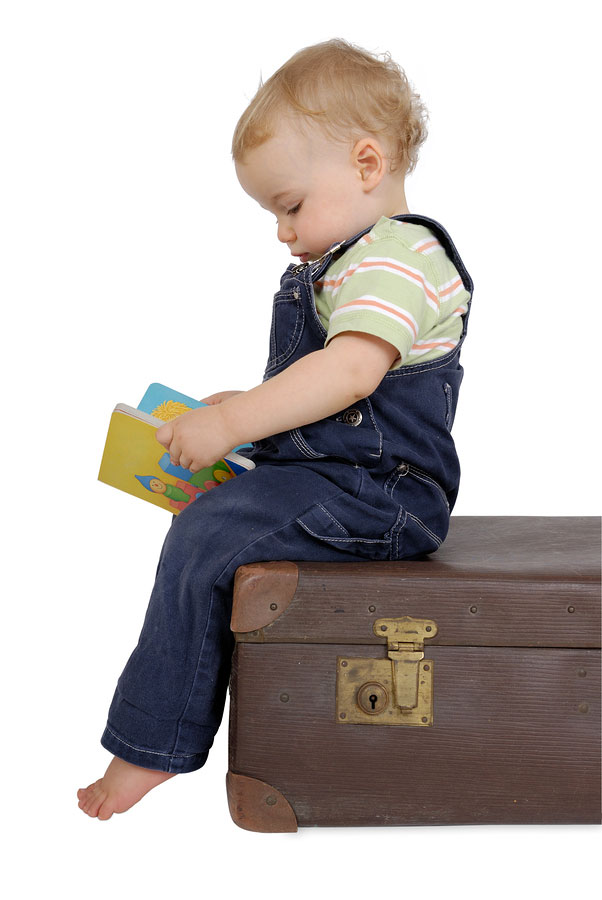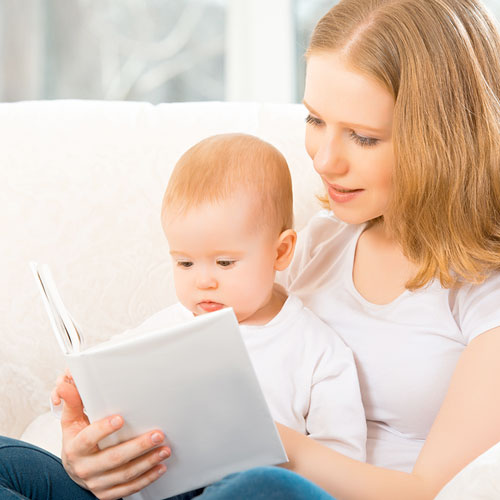Preparing your baby for school
My “baby” started school this week. It seems like just yesterday that she really was a baby whom I held in my arms and who barely left my side. When I said goodbye at the door of her new classroom this morning all I could think was “how did she reach school age so quickly?”.
If you’re a new mother I’m sure that the last thing you are thinking about is your child’s schooling. You might have considered which school you’d like to send him to, or put his name down on a waiting list but preparing him for school probably seems like a concern for the future.
The future has arrived in our house and I have bought my little girl’s uniform (which she looks so small in – sob, sob), a new lunchbox and backpack. The true test of how prepared she is for school is yet to come, in particular for formal literacy learning.
When children begin school they are more likely to succeed if they have six pre-literacy skills. But how exactly are you supposed to ensure that your child is getting the foundation that they need before entering school?
Literacy learning starts from birth
The key is to start your child’s literacy learning journey early. Literacy education starts right from birth. At birth, an infant’s brain is still developing and the experiences that we provide determine how the brain is developed. You are your baby’s very first and most important teacher. That might sound like a lot of pressure but there’s no need to rush out and start buying baby flash cards. Here are the 6 pre-literacy skills and how you can kickstart your baby’s literacy learning.
1. Vocabulary
Knowing the names of things is an extremely important skill for children to have when they are learning to read. It helps them make a connection with the object and the letters used to spell the object. Obviously, the best way to build your baby’s vocabulary is by talking to him. It is important to name objects in your child’s world that you and he may encounter throughout the day. Rather than simply pointing at the object and saying its name ie. “dog”, it is more beneficial to use the word in a complex sentence such as “the dog is wagging his tail because he is happy.” This makes nets of meaning that will then help your child learn new words. For more information on talking to your baby you can read my blog 7 tips for talking to your baby and building intelligence through language.
2. Print Motivation
Print Motivation is being interested in and enjoying books. It might seem like the only thing your baby is interested in doing with a book right now is eating it. But the more you read to them the more you expose them to the joy of reading, even from birth.
The main idea of reading to your baby from birth is to saturate him with the sounds of language. Books with rhyming and repetition are perfect for this or you could even read him passages of books that you enjoy (unless of course your favourite book is Fifty Shades of Grey ;)).
Then when your child is able to focus on the world around him and is making cute goos and gaas and grasping objects, it’s a good time to pick age-appropriate books with simple pictures and texts. Books with elaborate pictures make it difficult for babies to focus and may overwhelm him. Instead try cloth or board books with animals and animal sounds which are easier for babies to imitate.
Surround your baby with books – whether they are his own or borrowed from the library. Children’s author Mem Fox has a great list of books to read to babies under-one-year old. Make reading an everyday part of your baby’s routine. My husband and I used to read to our babies every night after a bath before bed. It was a special time that has helped foster our children’s ongoing love of books.
3. Print Awareness
This is an understanding of how books work – noticing print, knowing how to handle a book and how to follow the words on a page. For your baby, a big step towards print awareness is learning how to turn the pages. Mem Fox suggests helping him by separating the next/following page with your fingers and getting it ready. Her grandson learned to turn the pages when he was only five months old!

4. Narrative Skills
This is when a child is able to understand and tell stories, and describe things he sees. Again, you can set the wheels in motion by talking and reading to him regularly. When reading try to engage him in the process by being as expressive as possible. Point to objects in the book and name them; change your voice as you read aloud and make the sounds of the animals the baby see in the book. Ask your baby questions about what’s happening on the page, such as, “Where is the sheep?” Pause, point, and answer for baby, “Oh, there’s the sheep!” Read him his favourite stories again and again.
5. Phonological awareness
Phonological awareness is the awareness of all of the sounds of language. It includes the ability to hear and create rhymes, to say words with sounds or pieces left out, and the ability to put two word pieces together to make a word.
Babies learn phonological awareness through music and significantly through their parents singing and reciting nursery rhymes to them. Most children who have difficulty reading have trouble in phonological awareness. So that age-old tradition of singing and reciting nursery rhymes to babies and young children plays an important role in learning to read.
A survey in 2007 publicised by the UK Guardian newspaper showed that nearly 40% of parents in the UK under the age of 30 couldn’t remember a single nursery rhyme in full. Around the same percentage of all parents said they never sang to their children. And this was before the distraction of smart phones and tablets took off to the extent that they have now!
If you don’t know any nursery rhymes or children’s songs you can learn some quickly and easily by subscribing to The Bubble Box program.
6. Letter Knowledge
Letter knowledge is knowing that the same letter can look different and that letters have names and are related to sounds. Of course this is not something you are going to explicitly teach your baby. The first step in letter knowledge is learning about shape and size, so try these ideas:
- You can encourage your baby to play with different kinds of toys and talk with your baby about the toys, like the shape of the rattle and the colors of the soft blocks.
- You can choose books that have sharp contrast, like black on white or books with colorful and clear photographs which are easier for your baby to see.
- You can describe what your baby is looking at – the color, shape and texture so that later your baby will learn to notice these characteristics.
Give your child a head start
Learning to read (and write) doesn’t start from the moment your child enters a classroom. It starts at birth. What you do helps your child get ready for school. Talk to him, read to him and play with him every day and you are sure to give him the best possible start in life.
For more inspiration check out this video Read, Speak, Sing: Fun ideas for you and your baby by the Canadian Paediatric Society/Société canadienne de pédiatrie.



0 Comments